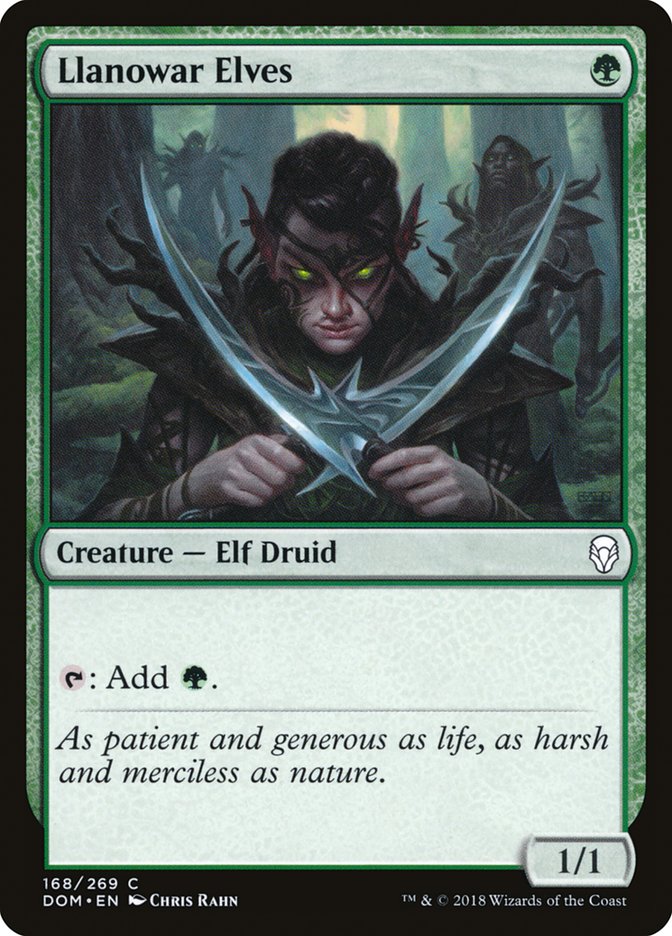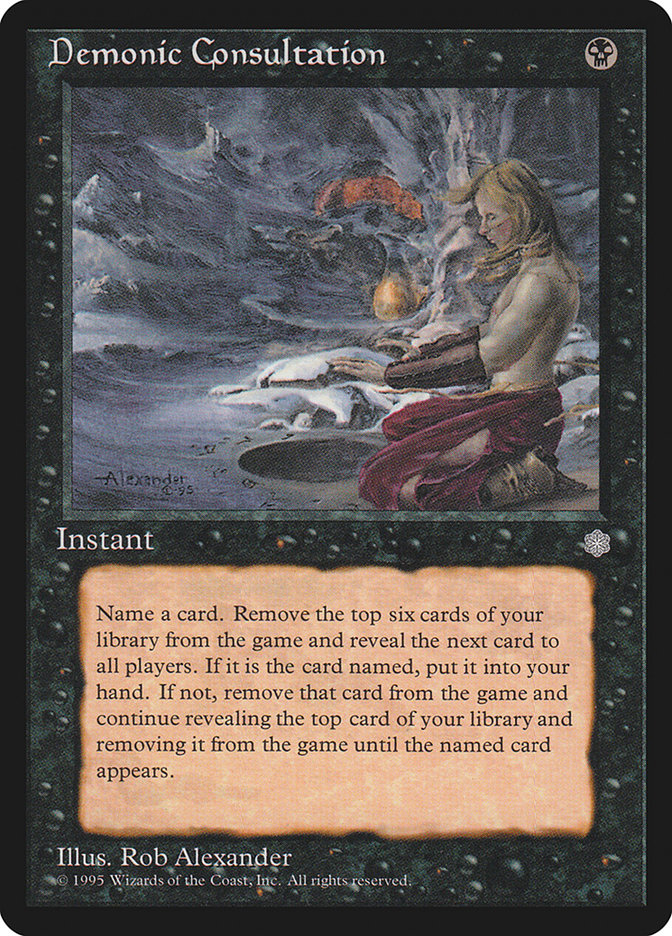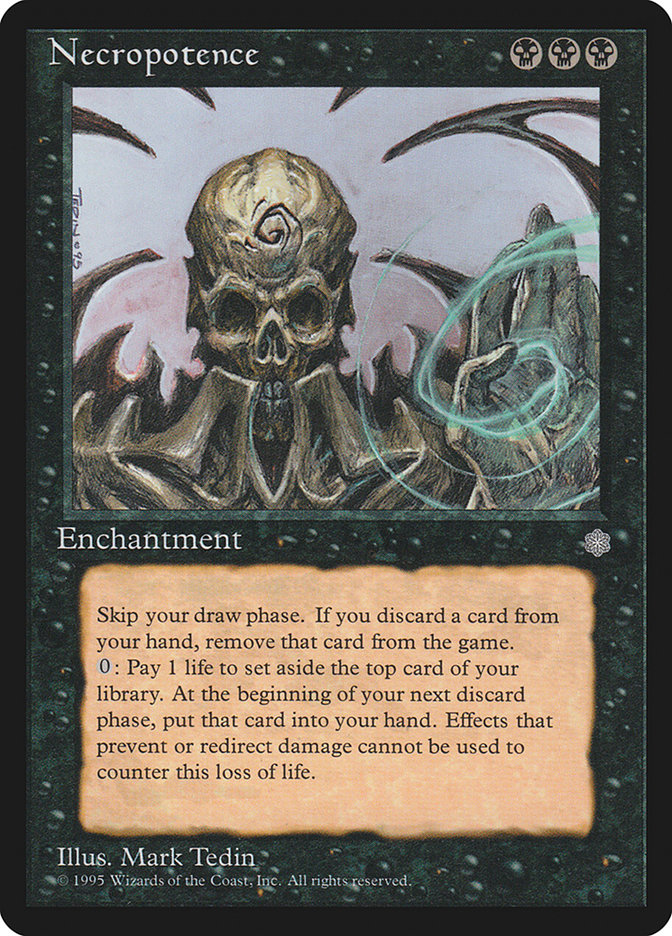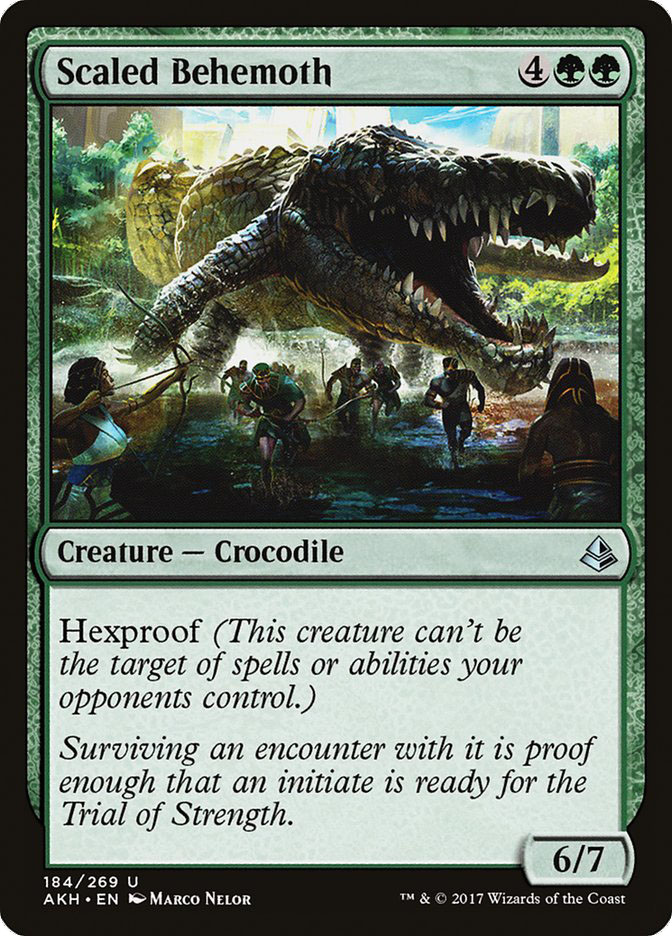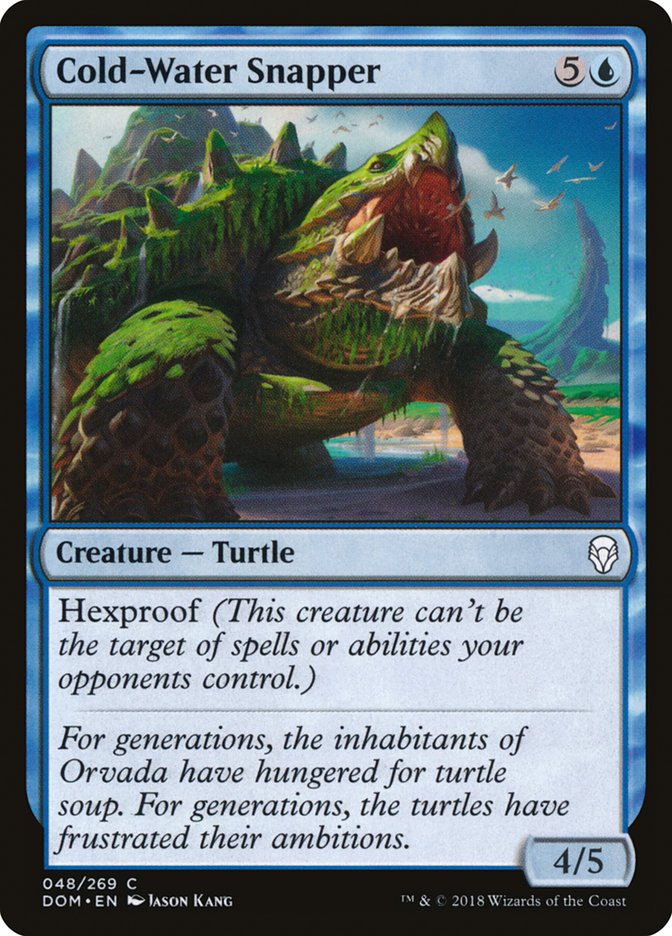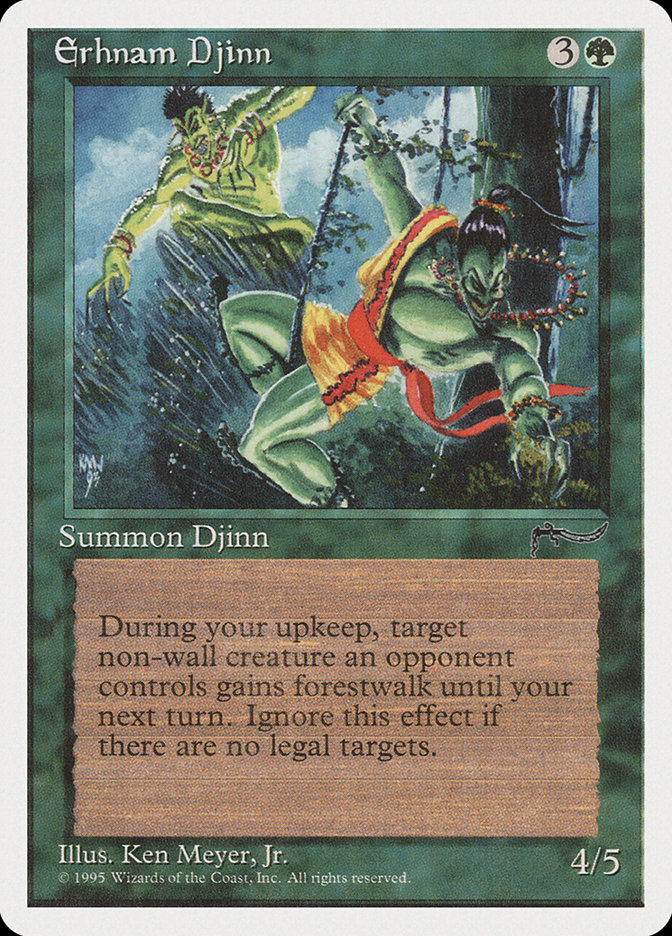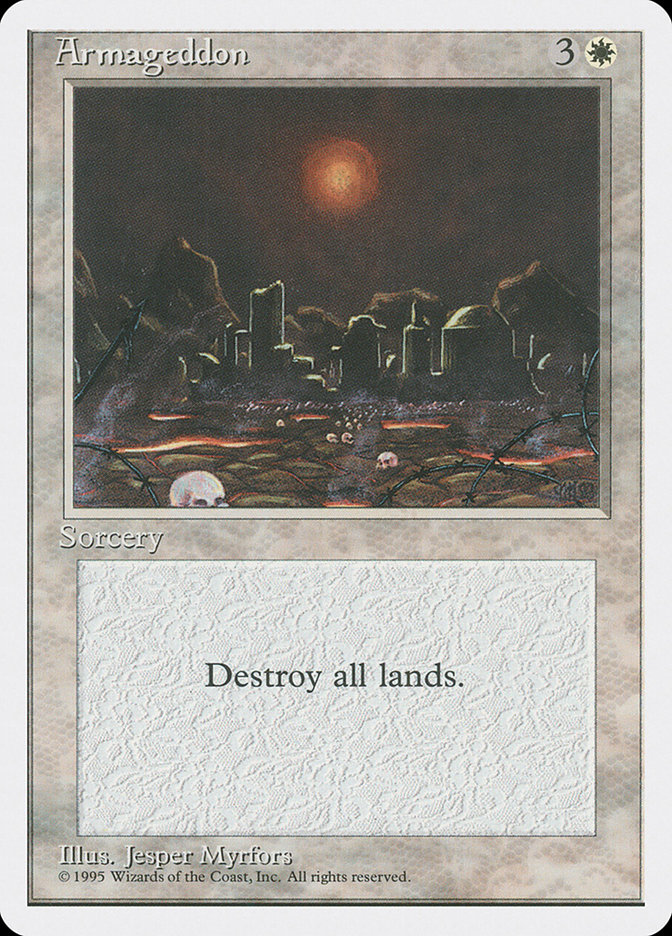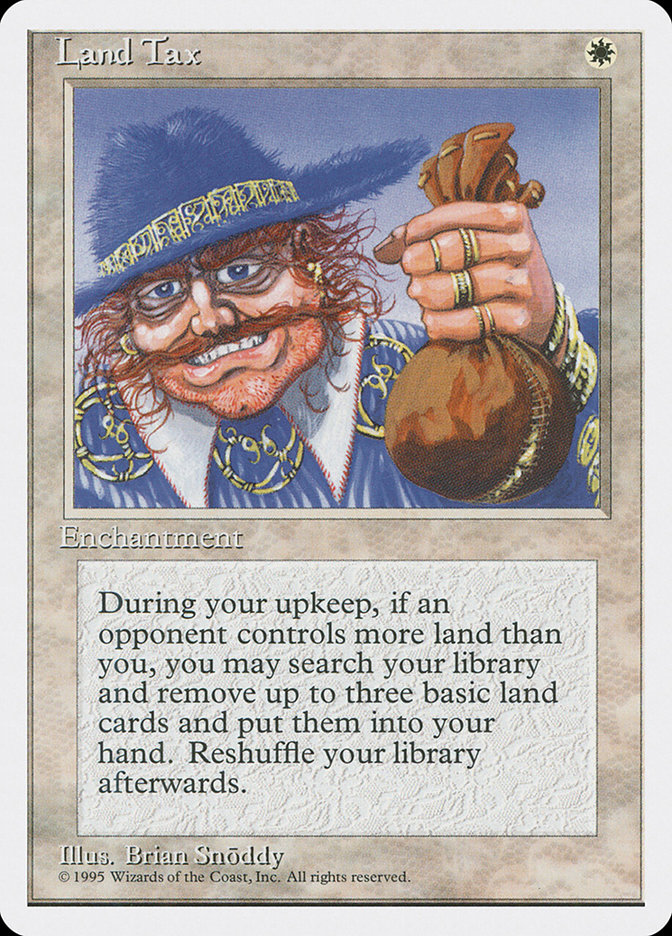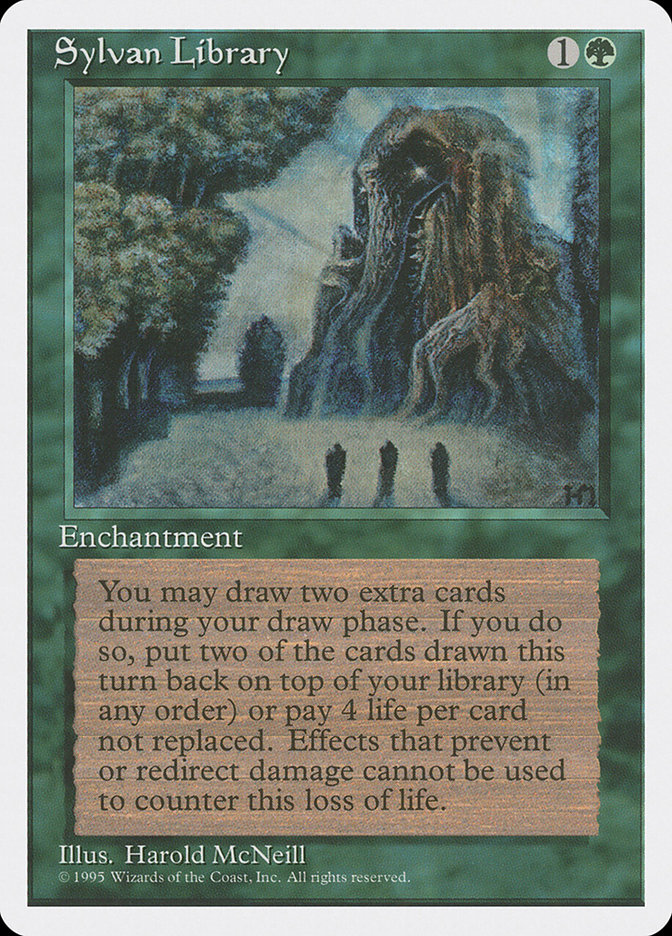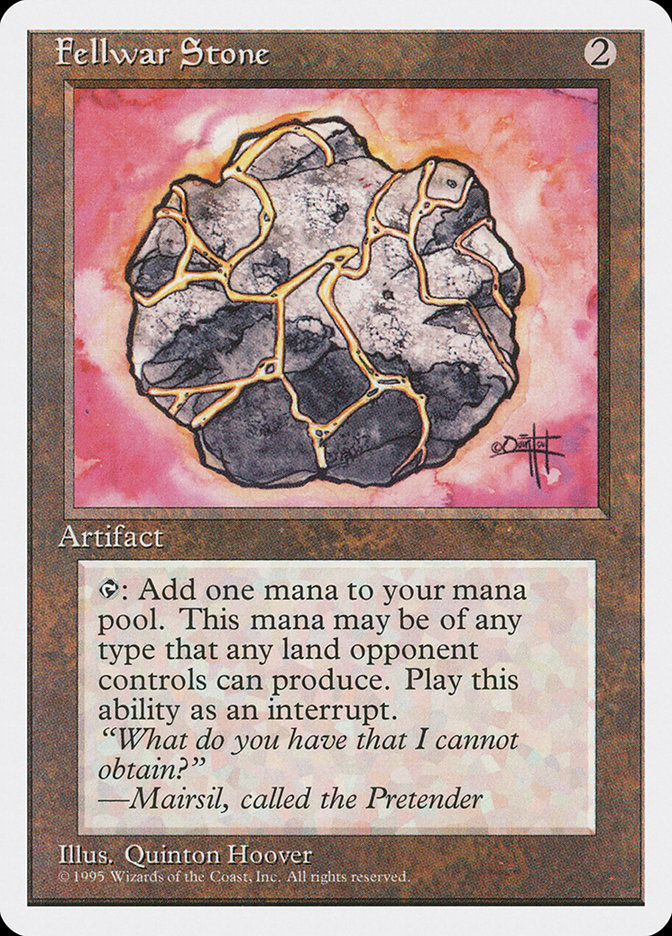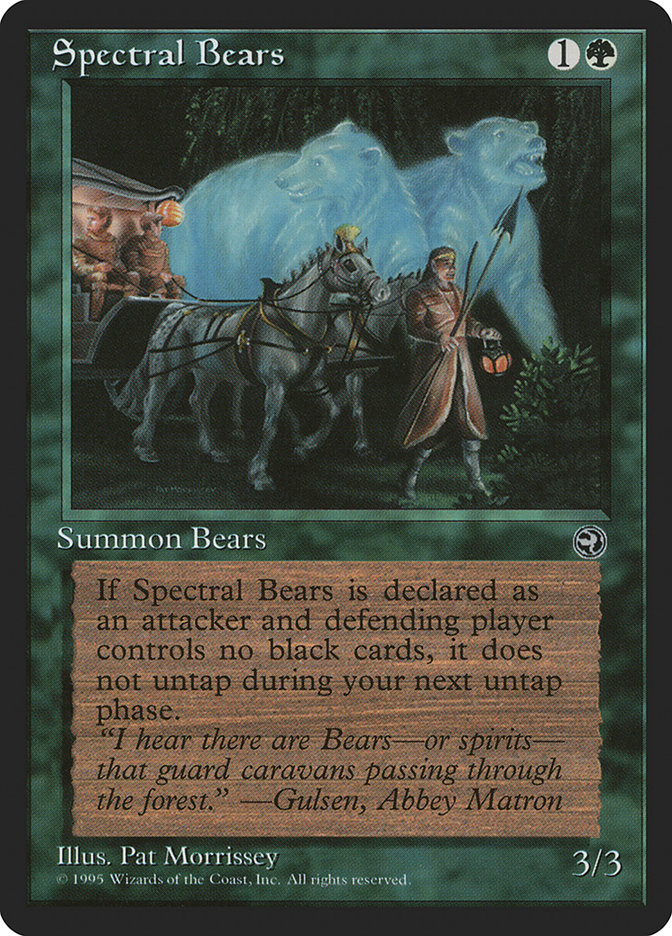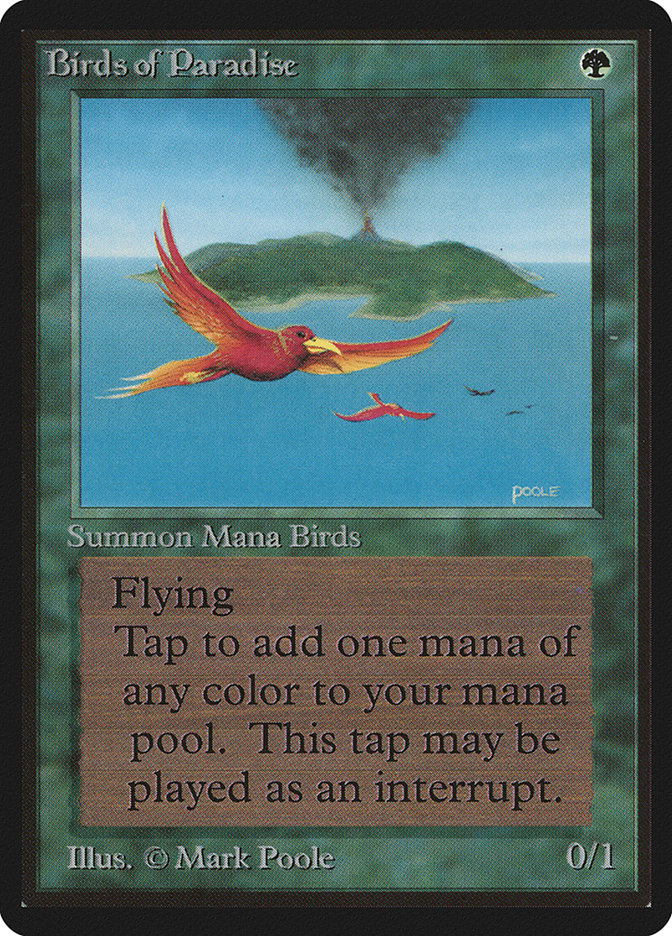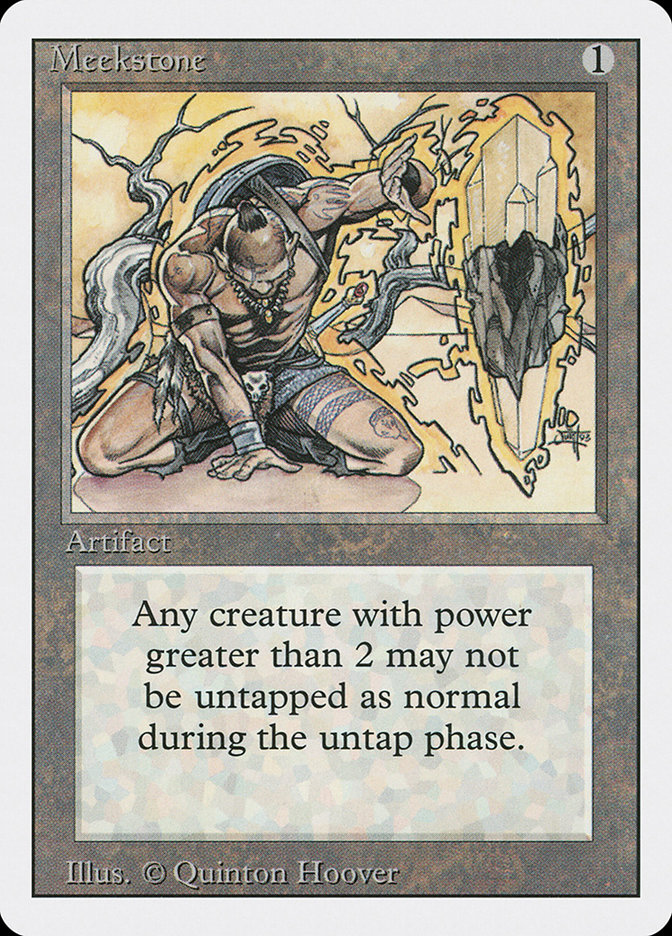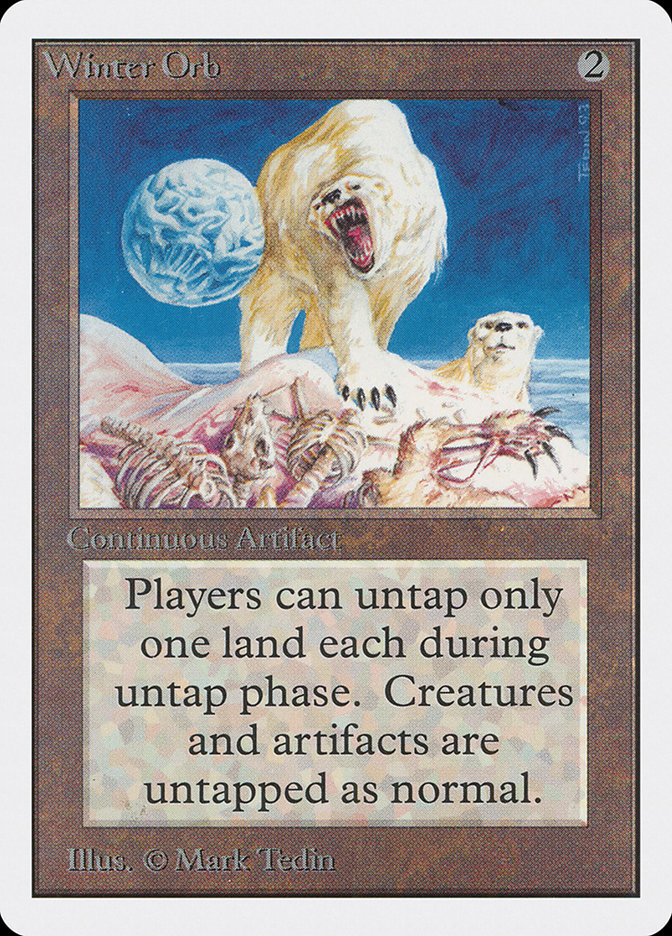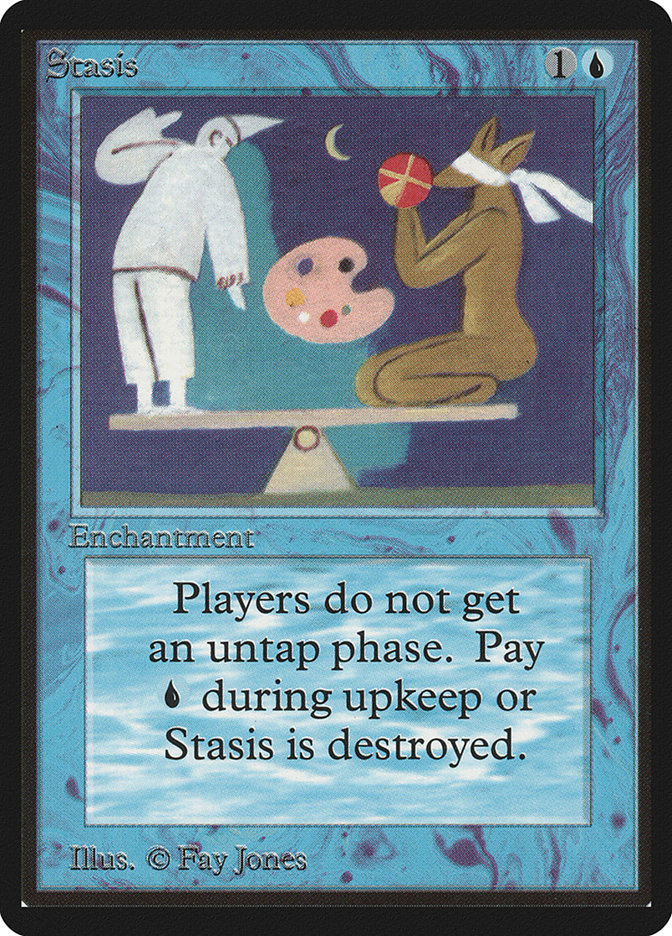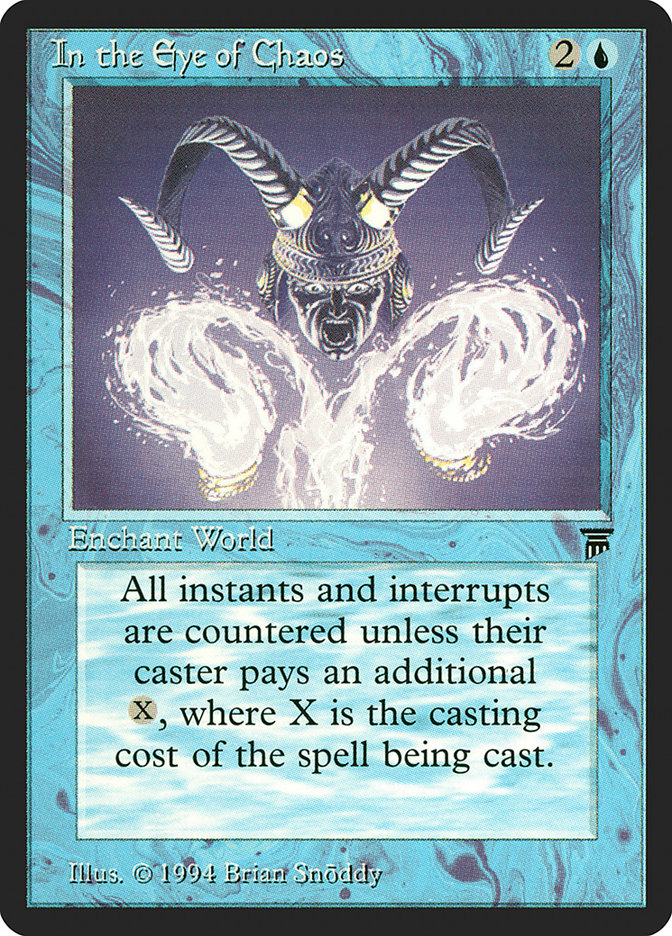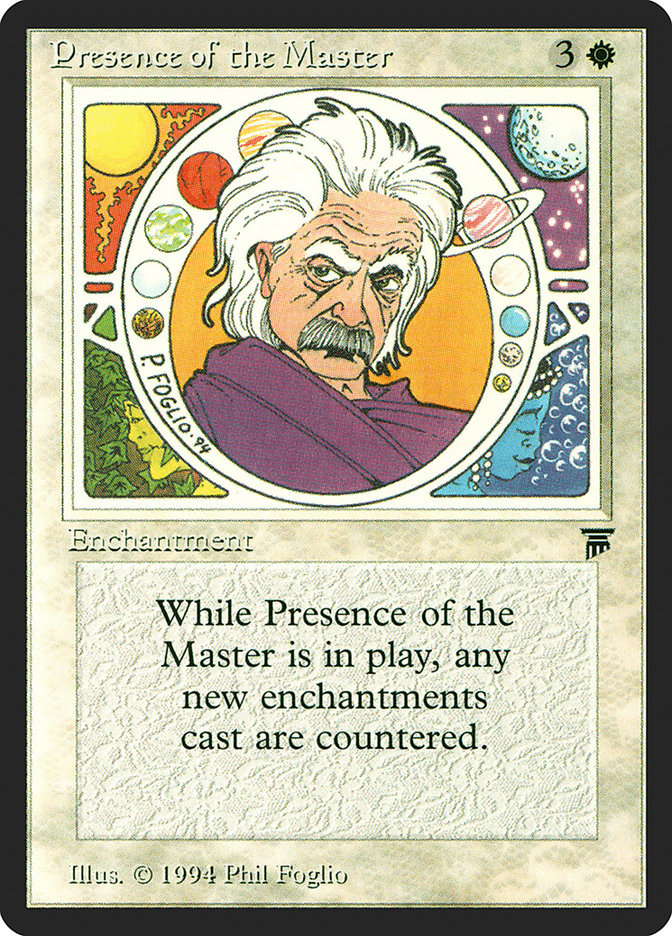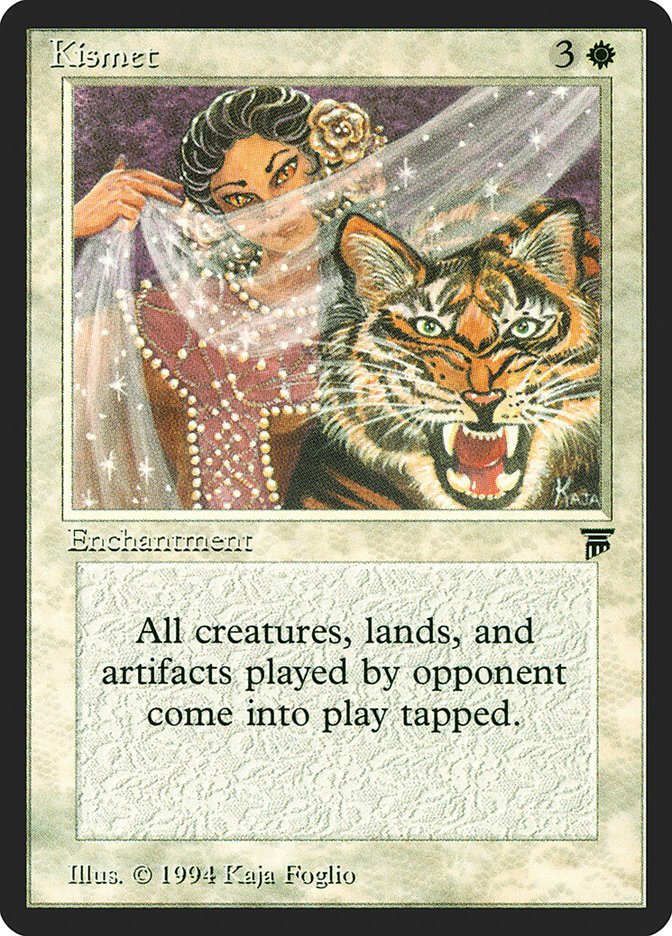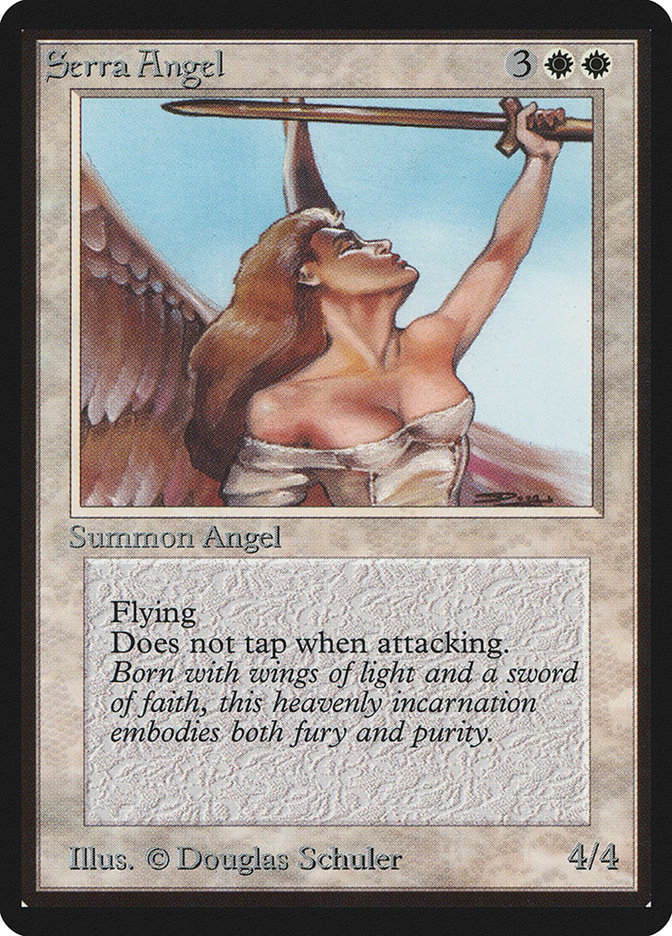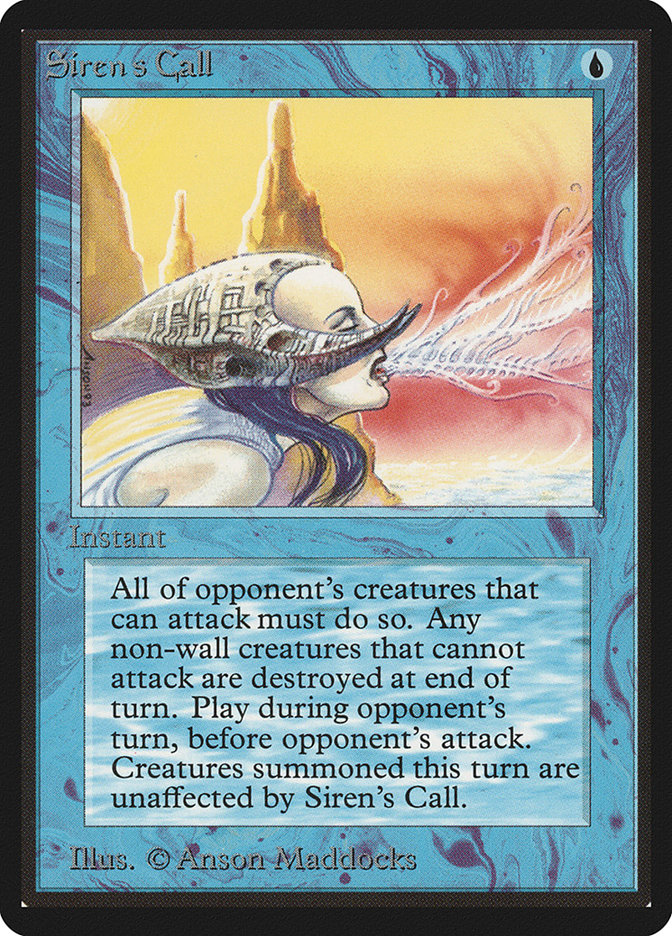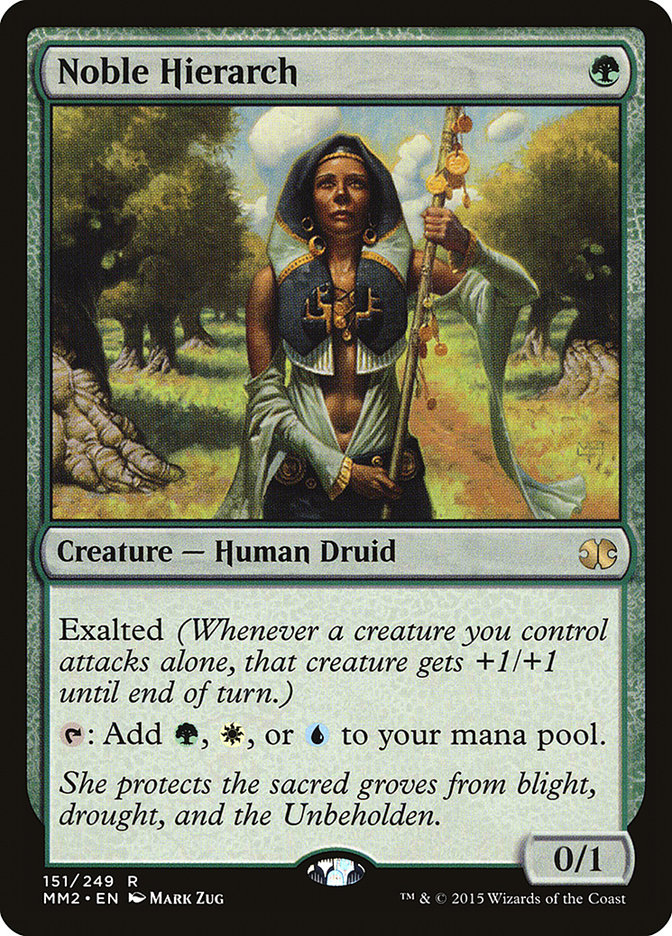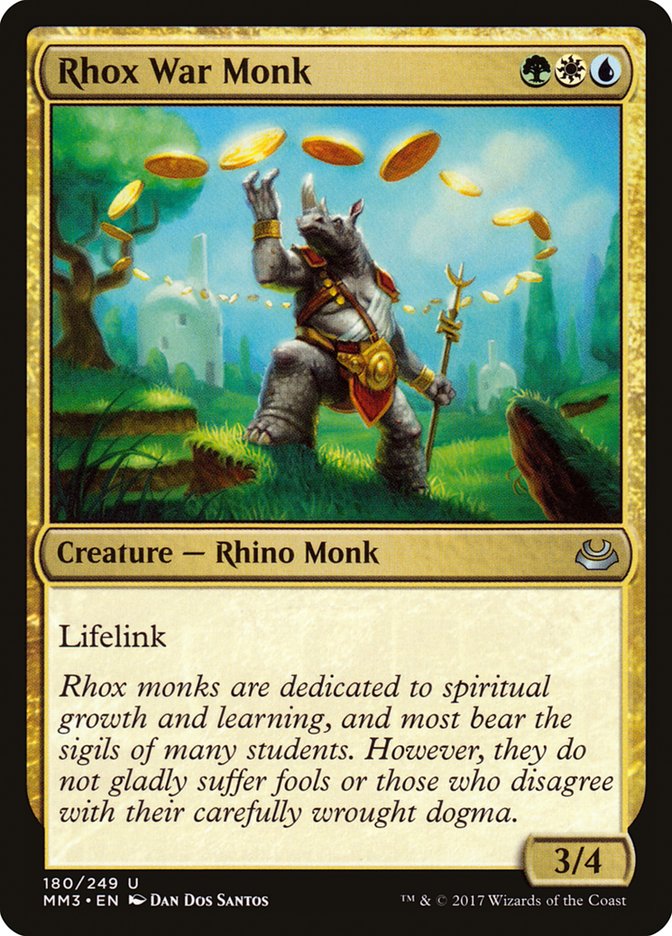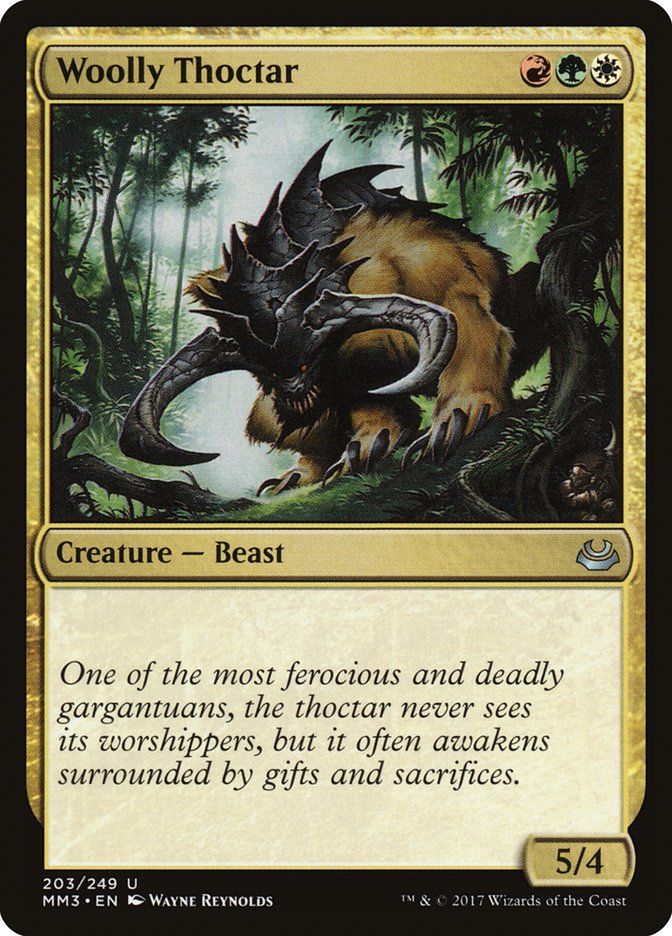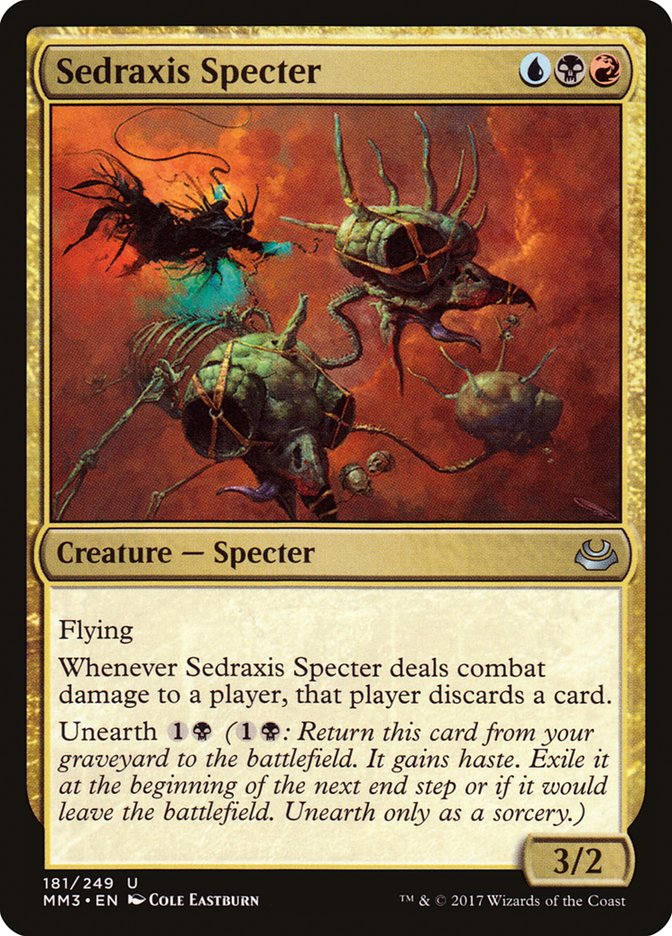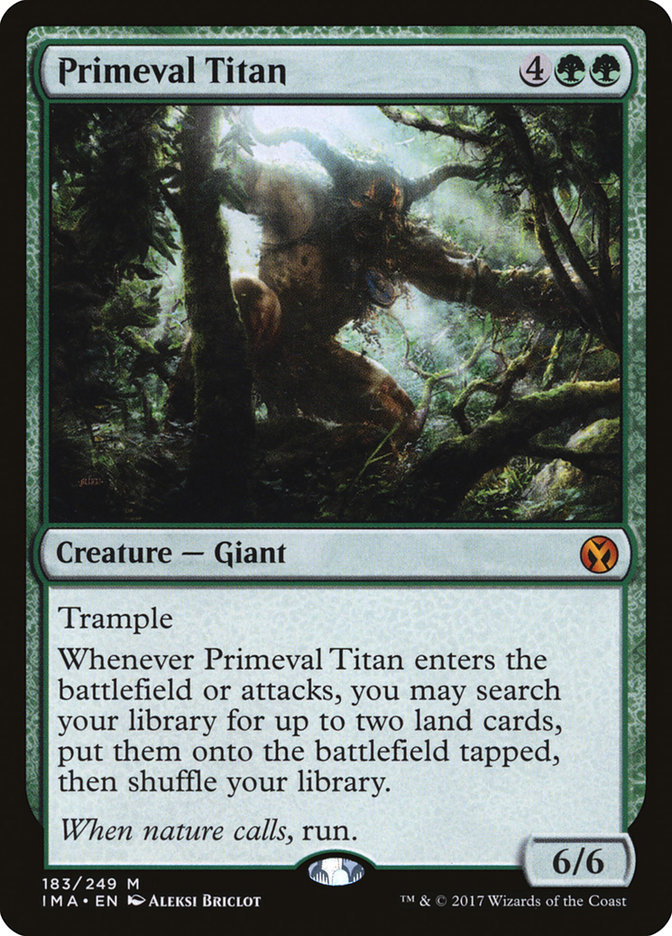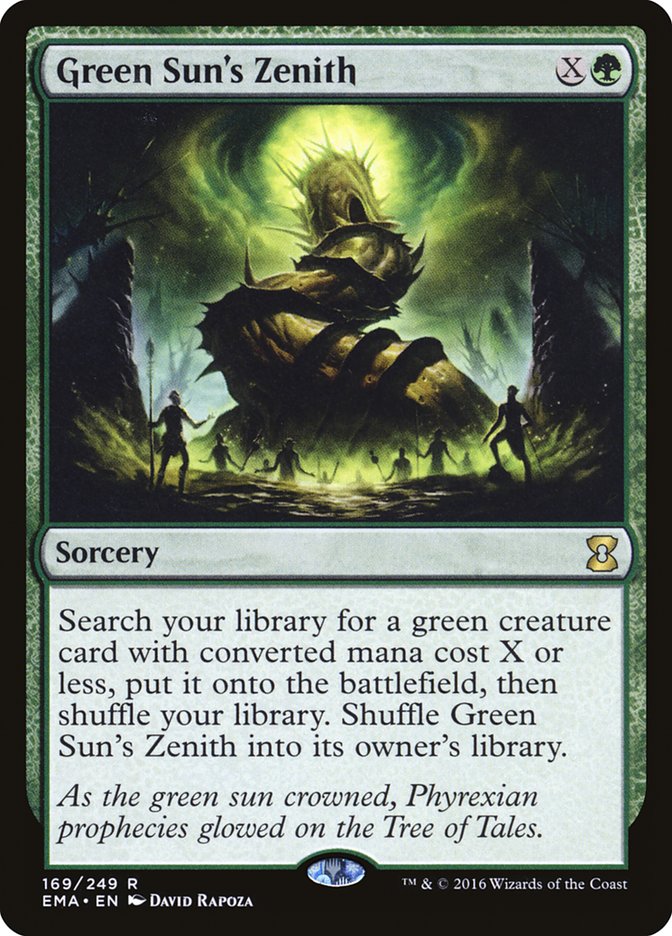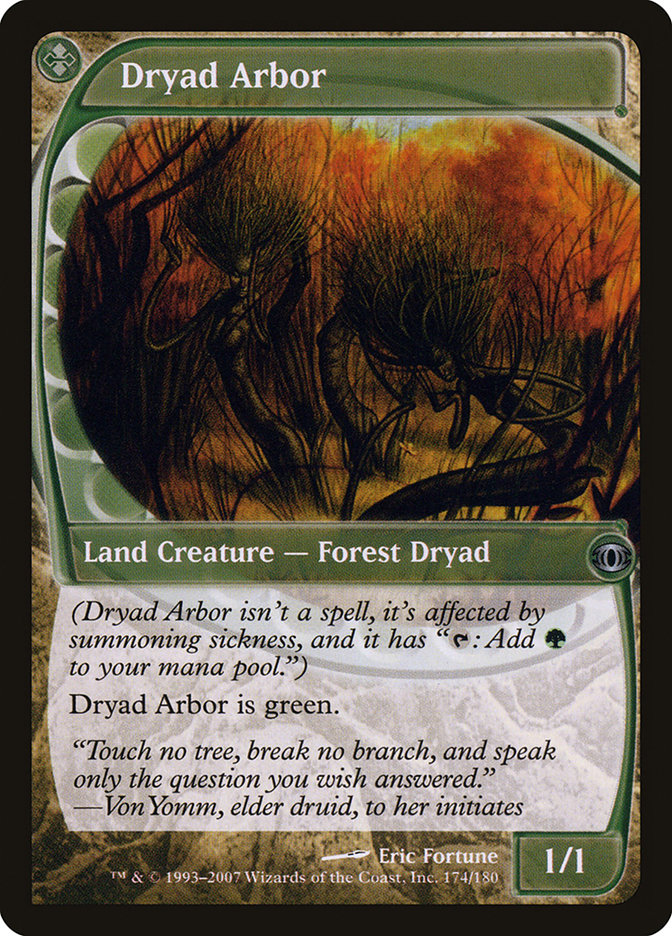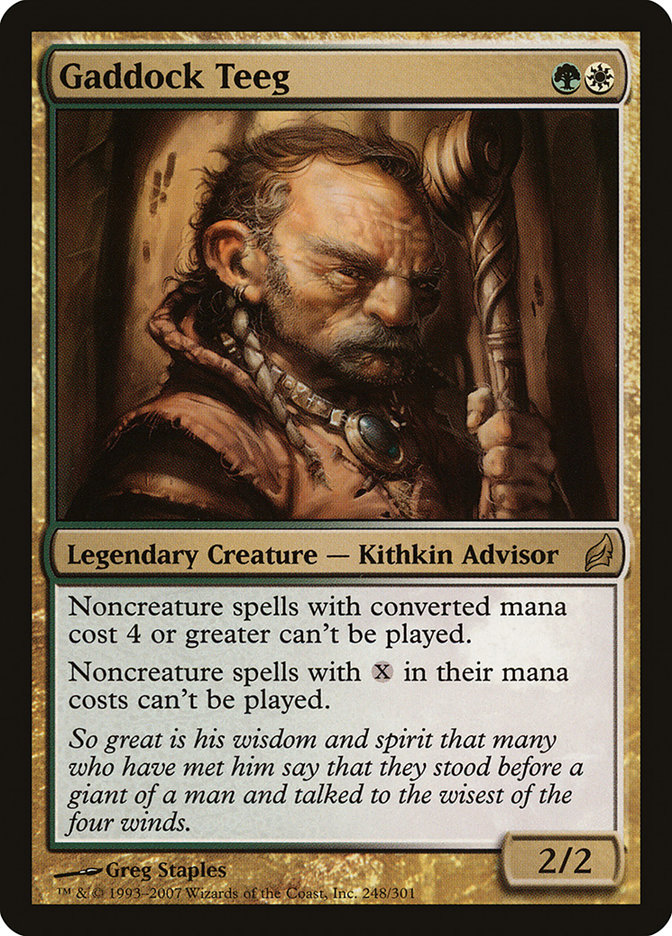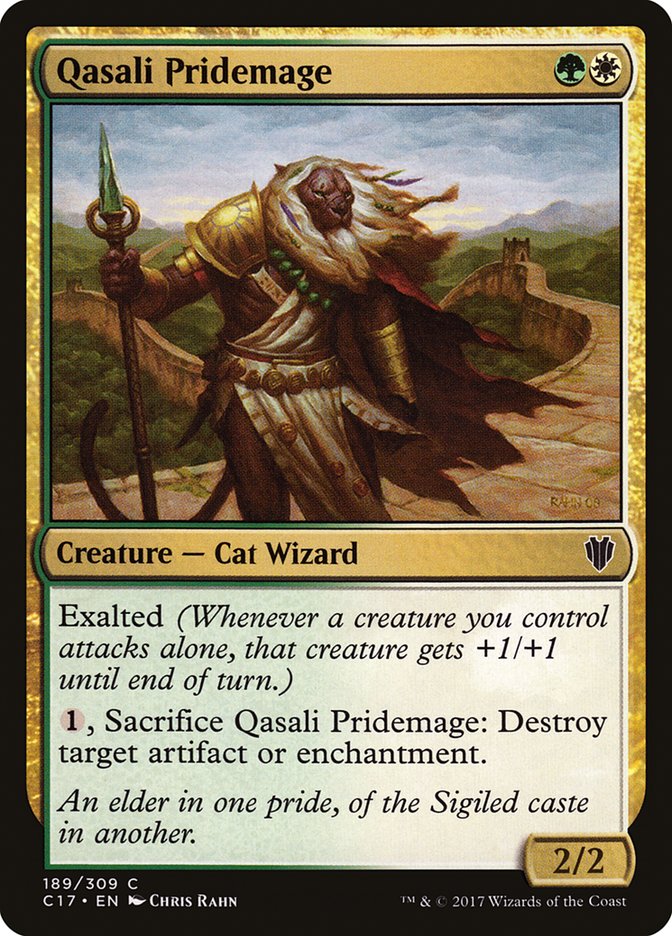It’s not easy
being green.
The young and naive, nay, idealistic among us may think Goblin Chainwhirler
just so happened to accidentally happen this time. It’s not Llanowar Elves’
fault. What is Llanowar Elves’ “fault” is that even though red decks kill
Llanowar Elves all day, the Elves make it possible to justify playing more
green mid-sized creatures and fatties than would normally be feasible; and
as such, green creature decks have historically been advantaged against red
aggro decks (at least most of the time).
#15: Llanowar Elves (and Fyndhorn Elves and Elvish
Mystic)
Yeah, yeah, this is three cards; but come on…
Llanowar Elves was a straight banger from the get-go; don’t get it twisted.
Creatures (20)
Spells (40)

Two things:
First, trade for some Taigas. Trust me on this.
Second, you can tell this isn’t a real 1993 deck. The first restricted
list wasn’t until January of 1994, and Channel wasn’t on it. They were
too busy restricting Dingus Egg, Rukh Egg, and Orcish Oriflamme.
Besides, you know damn well nobody played 23 land in their deck in
1993, to say nothing of playing 60 cards.
Llanowar Elves was a key part of the metagame of the literal first Magic
tournament ever, at the 1993 GenCon (though, full disclosure, card
availability was a big factor).
Llanowar Elves enjoyed lots of success prior to the advent of the Pro Tour
(particularly in the hands of Mark Justice and Henry Stern), but the
Llanowar Elves deck I’d like to look at came a little bit later… at Pro
Tour 1.
Creatures (14)
- 1 Serra Angel
- 2 Llanowar Elves
- 4 Erhnam Djinn
- 2 Fyndhorn Elves
- 2 Spectral Bears
- 1 Autumn Willow
- 2 Order of Leitbur
Lands (10)
Spells (36)

Bertrand Lestree was one of the original powerhouses of Magic and a key
figure in helping establish France’s position as one of the strongest
countries for competitive play in the game’s history. With a finals
appearance in the first Magic World Championships in 1994, Lestree was one
of the early names to watch and he didn’t waste any time, reaching the
finals again in the very first Pro Tour.
This G/W “Willow Geddon” deck was the talk of the town leading up to the
event, at least in the “adult division.” The junior division was kind of
just dominated by Demonic Consultation for Necropotence and other silly
things that almost none of the adults were up on.
It’s hard to believe just how revolutionary Autumn Willow was in that day
and age; yet how much worse it is than mediocre Draft cards of today.
The top level goal was ostensibly to drop an Erhnam Djinn or Autumn Willow
and then Armageddon, bashing their skull in before they can recover.
Erhnam Djinn was especially “clever,” since playing Armageddon conveniently
destroys all of your own Forests, negating the drawback.
In practice, Land Tax and Sylvan Library were a pretty big part of this
deck’s success, particularly since most people at the time didn’t realize
that the best way to play against Land Tax was to determine immediately if
you could possibly win waiting it out (which was plan A); or if you needed
to just immediately play into it and hope for the best. Waiting it out
usually involved discarding to hand-size turn after turn, making Llanowar
Elves and Fyndhorn Elves game-breakers, allowing you to deploy Fellwar
Stones and Spectral Bears, even against an opponent sitting on a single
Plains and a Land Tax.
Besides, Llanowar Elves and Fyndhorn Elves are fantastic for breaking the
“parity” of Armageddon (since, you know, deciding when to play Armageddon
or not doesn’t imbalance anything…)
And what about Elvish Mystic?
Creatures (16)
Planeswalkers (7)
Lands (24)
Spells (13)

Elvish Mystic has also had plenty of success, but winning with Abzan is
generally better than other combinations (besides maybe Grixis).
#14: Birds of Paradise
Speaking of one-cost accelerators that were good from jump street, Birds of
Paradise has got to be pretty high on the list of most iconic cards, all
time. While the beatdown of Llanowar Elves matters sometimes, Birds of
Paradise solved all mana problems like nothing else. What’s more, there
have been many occasions where Birds of Paradise’s flying has saved people
that would otherwise have been locked out of the game by Moat or a ground
stall. Giant Growth + Birds of Paradise, baby!
As if that wasn’t enough, Birds of Paradise played a key role in the very
first Magic World Champion’s Bant Control deck:
Creatures (11)
- 4 Serra Angel
- 1 Birds of Paradise
- 1 Clone
- 1 Vesuvan Doppelganger
- 1 Time Elemental
- 1 Ley Druid
- 2 Old Man of the Sea
Lands (15)
Spells (34)
- 1 Mana Drain
- 1 Armageddon
- 1 Wrath of God
- 4 Swords to Plowshares
- 1 Icy Manipulator
- 1 Howling Mine
- 1 Winter Orb
- 2 Stasis
- 1 Mana Vault
- 1 Ivory Tower
- 1 Control Magic
- 1 Sol Ring
- 1 Regrowth
- 1 Time Walk
- 1 Ancestral Recall
- 1 Siren's Call
- 2 Meekstone
- 2 Disenchant
- 1 Black Vise
- 1 Kismet
- 1 Recall
- 1 Timetwister
- 1 Black Lotus
- 1 Mox Emerald
- 1 Mox Jet
- 1 Mox Pearl
- 1 Mox Ruby
- 1 Mox Sapphire

See?! Fifteen land!?!?!? Even with all the Moxes and such, Dolan’s deck
was, like every deck, every single player played, completely dysfunctional.
The mulligan rule was even “all-land or no-land,” rather than what we see
today (watch out for Diamond Valley draws…)
Reaching the finals of the 512-player single-elim Magic World Championship,
Zak Dolan’s list featured lots of generally powerful cards (Moxes and Mana
Drains and the like) and an ungodly amount of resource denial.
All of this disrupting of the untap step sure makes those Serra Angels look
good, and Siren’s Call was a blowout if all opposing creatures were stuck
tapped.
Seriously though, if you’ve never rocked this particular beauty, I’d take
it for a spin sometime. Maybe against a R/B Standard deck. It might be an
enlightening experience, and it’s sure to be hilarious, the first time
around.
#13: Noble Hierarch
While Elves of Deep Shadow didn’t make my list (despite being excellent)
nor did Avacyn’s Pilgrim, Llanowar Elves and Birds of Paradise aren’t the
top of the list for one-drop mana creatures either.
That’s a gold card. This list is all mono-color. Keep up.
Noble Hierarch wasn’t just a Llanowar Elves that also happened to make blue
and white mana for free; it also featured exalted, making it the most
impactful green one-drop accelerator in the game’s history (since we’ve
already established Deathrite Shaman doesn’t count). The ability to move
the +1/+1s around each turn gave it a level of tactical depth rivaled by
few.
Noble Hierarch’s debut Pro Tour was Pro Tour Honolulu 2009. While G/W aggro
with four Noble Hiearchs was one of the most popular strategies in the
format, it was Conley Woods Five-Color Monsters deck that definitely took
the prize for coolest deck in the room (while earning him his first Pro
Tour top 8).
Creatures (29)
- 3 Broodmate Dragon
- 4 Rhox War Monk
- 4 Sedraxis Specter
- 4 Woolly Thoctar
- 4 Noble Hierarch
- 4 Putrid Leech
- 2 Jenara, Asura of War
- 4 Bloodbraid Elf
Lands (24)
Spells (7)
Sideboard

Conley “Merieke Ri Berit + Thousand-Year Elixir” Woods was the only player
to successfully combine Rhox War Monk, Woolly Thoctar, Sedraxis Specter,
and Naya Charm, with a manabase only a mother could love.
Really, Conley’s manabase was actually a brilliant combination of
innovations, going well beyond the Ancient Ziggurats at the heart of the
list. While tri-lands were commonplace and Path to Exile to fix your colors
wasn’t unheard of, it was his use of Exotic Orchard that really put the
deck over the top. He realized that most everyone else was using tri-lands,
too, so if he played all five colors, his Exotic Orchards were generally
going to function like untapped tri-lands!
That said, the Noble Hierarchs producing three different colors didn’t hurt
and were the reason he played Jenara, Asura of War over Sprouting Thrinax.
You see, all the three-drops we’ve discussed so far can be played on turn
two after a turn one Noble Hierarch after being played off a Forest or an
Exotic Orchard making G/W.
#12: Primeval Titan
The Magic 2011 Titans revolutionized what was possible for six
mana, and Primeval Titan was the best of the bunch. While the card has gone
on to be most commonly associated with Valakut, the Molten Pinnacle, it was
the combination of Inkmoth Nexus and Kessig Wolf Run that propelled Brian
Kibler to his most recent Pro Tour victory.
Creatures (16)
- 3 Solemn Simulacrum
- 1 Birds of Paradise
- 1 Acidic Slime
- 2 Inferno Titan
- 4 Primeval Titan
- 1 Thrun, the Last Troll
- 4 Huntmaster of the Fells
Lands (25)
Spells (19)

While many Primeval Titan decks have played out like combo decks, the CFB
list was much more of a traditional ramp deck. Not only did it have a
playset of Primeval Titans as ideal curve-toppers, it featured both Inferno
Titan and Green Sun’s Zenith…
#11: Green Sun’s Zenith
Ahh yes, because why shouldn’t your Llanowar Elf also be a Primeval Titan
split card?
While Green Sun’s Zenith was merely a very powerful Standard card, having
to pay two mana for Birds of Paradise is night and day different than
paying one for a Dryad Arbor.
While this combination was a defining pillar of the first Modern Pro Tour
and while Primeval Titan/Cloudpost decks were all the buzz, the week of the
event, it was Josh Utter-Leyton’s Counter Cat deck (or as we refer to it,
in the industry, “Blue Zoo”) that finished highest among Green Sun’s Zenith
decks.
Creatures (18)
Planeswalkers (2)
Lands (20)
Spells (20)
Sideboard

Rather than trying to make Green Sun’s Zenith a busted combo card,
Utter-Leyton’s list used it as a virtual Llanowar Elves on turn one that
could be “kicked” into better threats, depending on the mana available
(especially Knight of the Reliquary). It also enabled a minor toolbox in
the form of Qasali Pridemage and Gaddock Teeg…
…Just be careful not to lock yourself out, as Gaddock Teeg shuts off any
further Green Suns…


